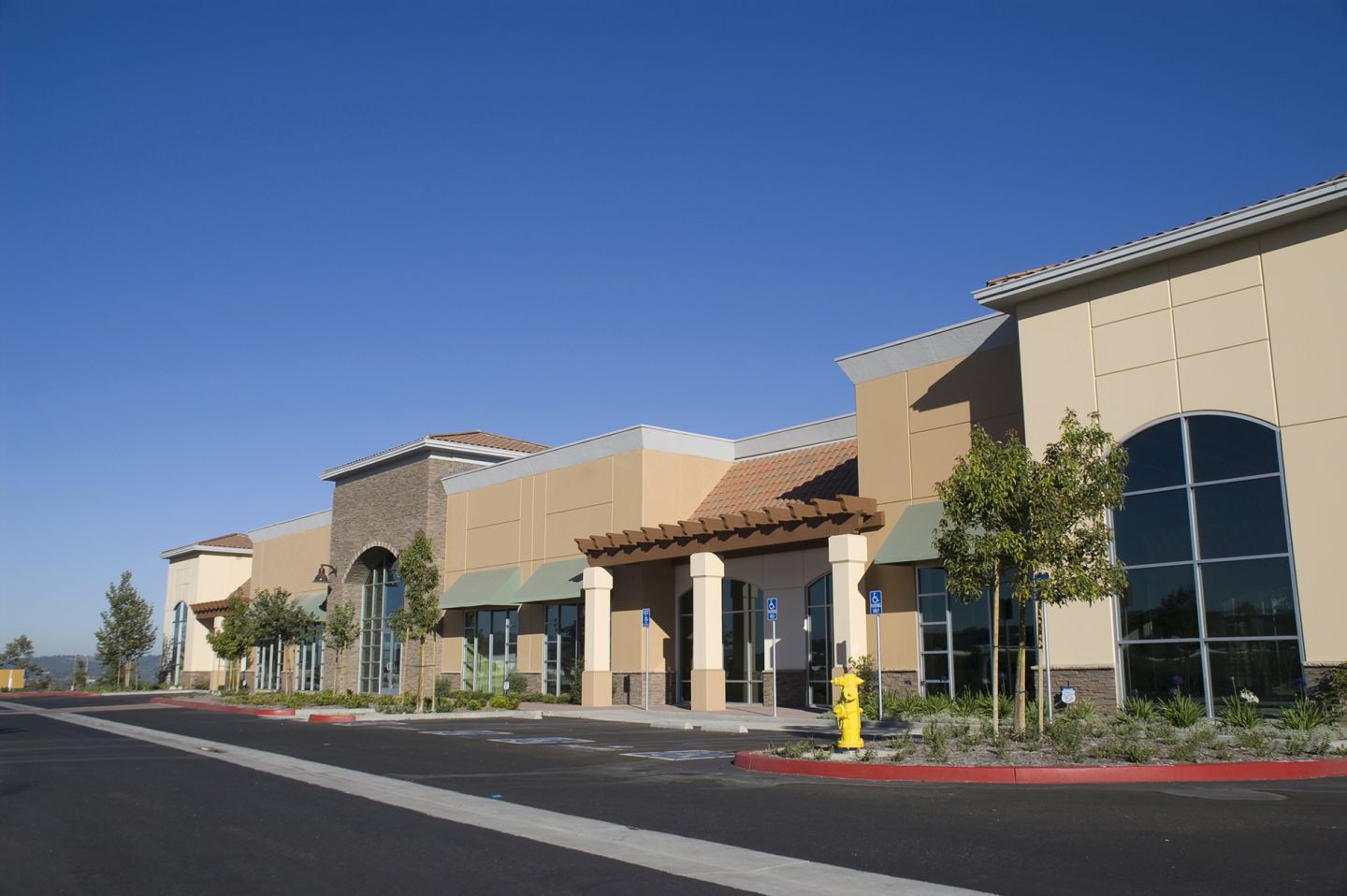2014 was a whirlwind year for retail. As the economy continued to pick up steam, retailers across the U.S. sought expansion opportunities, driving down vacancy rates while simultaneously driving up prices.
What lies ahead for the retail industry in 2015? Will these growth trends continue, returning retail to its pre-recession highs? Buxton interviewed leading industry experts to find out.
State of the Retail Real Estate Market
The recovering retail sector drove vacancy rates for neighborhood and community shopping centers down to 10.3% in the second quarter of 2014, according to ReisReports’ October report on retail market trends. While vacancy rates vary widely across markets and property types, ReisReports notes that the national vacancy rate has declined 80 basis points from its historical peak.
Strong investment activity is expected to further drive down vacancy rates in the coming year, while projected corporate profit growth of 4.1% in 2014 will provide the necessary funds to fuel expansion efforts. Also as banks lend more freely and foreign firms seek opportunities to invest in U.S. retail projects, access to capital is gradually becoming easier. Likewise, private equity firms are trying to capitalize on the strengthening retail real estate market by continuing to increase their already heavy investment activity in 2015.
This steady influx of capital is significantly raising prices for retail real estate. In fact, prices for retail properties grew the most among the four major property types with growth of 15% over the 12-month period ending in September 2014.
Despite all the positive signals of a recovering retail real estate market, there is a sense of caution in the commercial real estate community with PwC noting, “While hunkering down for an apocalypse is not a widespread strategy, and certainly not a trend, a concern for capital conservation is clearly abroad in the marketplace.”
Competition for Retail Space
While one might expect these growth trends to increase the level of competition for retail real estate in 2015, our panel of experts expressed mixed opinions.
Clay Smith, executive vice president of retail brokerage at Jones Lang LaSalle, notes: “The competition for good retail space will continue to be very fierce. The amount of retail development has continued to be constrained and has not kept pace with demand.”
Buxton Senior Vice President Paul Schlesinger agrees that competition will be more difficult in the coming year, saying, “Good retail space has always been, is and will continue to be at a premium. Simon Properties, the dominant mall and outlet mall landlord, has made significant capital investments in its ‘A’ properties, and both demand and rents are up for space in these properties. A lot of the 5 year leases (and older 10 year leases) that were done at cheap rates during the recession are up for renewal and many of these existing retailers will be forced out of these spaces by the higher rents. Waiting to fill these prime spaces are retailers such as Tory Burch, Michael Kors, and Kate Spade.”
However, other industry experts point to the large amount of real estate opening up as formerly dominant big box anchors close their doors, saying that these vacancies will ease competition for space.
Elaine Misonzhnik, senior associate editor of National Real Estate Investor, told Buxton, “It’s likely that next year expanding retailers will have an easier time finding space as some of the declining brands exit the market, both through potential liquidations and through subleasing their spaces…that should create more opportunities for new chains to find both anchor and inline spaces.”
In some retail sectors, such as the grocery industry, “equilibrium” is expected to maintain the level of competition for real estate in the coming year. Marc Drasin, vice president of real estate at Grocery Outlet, expects competition to remain steady. “You have people getting out of the market, like Fresh & Easy, and people getting into the market, like Aldi’s,” says Drasin.
Other industry insiders point to the readily available retail real estate in second and third tier markets, leading to the conclusion that while competition for Class A real estate in top tier markets will continue to be extremely high, retailers that are willing to look to new markets or redevelop former big box space will find competition more manageable.
Retail Real Estate Trends
As we look ahead to 2015, many of the trends we noted in the 2014 edition of Buxton’s Retail Real Estate Outlook are expected to continue gaining strength.
Small footprint stores, for example, continue to be a hot trend. On one end of the spectrum, big-box giant Walmart has aggressively expanded their small-store format stores, while at the other end of the spectrum restaurants such as BRAVO | BRIO Restaurant Group are slightly shrinking their footprints to drive efficiency.
Gregory J. Moram, president of Aubuchon Realty Company Inc. and senior vice president of real estate for W.E. Aubuchon Co., Inc., projects that big box and category killer size footprints will continue to shrink.
Buxton’s Peter Healey, vice president of account management, agrees stating, “Many traditional retailers are shrinking their brick-and-mortar footprints as omnichannel strategies are implemented and e-commerce divisions make up for the reduction of square footage in the stores.”
Another key trend we discussed last year that will continue in 2015 is the movement of retail to urban centers, and not just toward traditional urban retail destinations like Manhattan and Chicago. Downtown redevelopment is picking up steam in many second and third tier cities, leading to what PwC refers to as the emergence of the “18 hour city,” cities that are alive well into the night and on weekends, if not 24/7.
The 18-hour city contradicts the notion that “only the great coastal cities can be alive around the clock and on weekends,” with one Southeast broker pointing to downtown Greenville and Charleston as “under the radar” examples of cities that are “alive in the evenings.” Schlesinger points to the gradual revitalization of downtown Cleveland, a process 10 years in the making, saying that “young people are moving back, and the shops and restaurants are quickly following.”
Looking forward into 2015, we see other trends gaining momentum as well with one of the most intriguing trends being the movement of online stores to offline channels. Whether these offline channels are pop-up shops à la Zappos, partnerships with traditional retailers such as the arrangement Blue Nile formed with Nordstrom, or full-fledged brick-and-mortar stores such as the ones being opened by Birchbox and Bonobos, online retailers are recognizing the benefits of a physical presence.
Another major trend is the marriage of bricks and clicks as brick and mortar retailers focus on developing their omni-channel strategies. For example, Restoration Hardware is seeking real estate for grand “showrooms” with the goal of driving shoppers to order online, while other retailers are emphasizing “click and pick up” services, which make convenient locations a priority.
The redevelopment of regional malls to bring in more food, service and entertainment concepts is another trend that we expect to see gain traction in 2015. According to Schlesinger: “Today’s customer is looking for an experience that feels more real, more fun, with more variety in the shopping experience. Architecture, design, natural sunlight, integration with the outdoors, alternative uses like better and more innovative restaurants, etc. will continue to gain traction with the customer.”
Additionally, neighborhood and community centers, particularly those anchored by grocery tenets, will attract a lot of investment in 2015. “I feel that traditional and neighborhood retail centers are the local life blood, with regional centers having run their course,” notes Moram. Others in the industry agree, with a 47.3% plurality of respondents to PwC’s Emerging Trends survey rating neighborhood and community centers a “buy.”
Finally, look for more retail growth in second and third tier cities in 2015. Why? Because as expressed previously, retailers are running out of Class A real estate opportunities in major markets and high prices are driving them to look elsewhere for growth.
Hot Markets
Retail development follows job growth and migration patterns, making historical trends an important factor in development decisions. Where there are jobs, there will be population growth followed by retail growth, according to the traditional view of market dynamics. But some suggest that moving forward, the U.S. may actually experience labor shortages, creating a situation in which jobs chase people. This could mean, for instance, that second tier cities popular with Millennials, such as Denver and Austin, see an even greater influx of jobs and development as the young professionals in these cities draw development to them rather than going toward areas that are already highly developed. 
In order to predict hot markets for retail growth in 2015, Buxton examined site scores run between October 2013 and October 2014 by a sample of approximately 150 current Buxton clients, primarily in the retail and restaurant industries. By examining patterns in the site scores, it’s possible to identify markets that are drawing interest from retailers.
Not surprisingly, the largest markets continue to dominate the list. Traditional retail hubs along the northeast corridor as well as Atlanta, Chicago, Dallas/Fort Worth, Houston, Los Angeles, San Diego and San Francisco all generated a lot of interest from retailers.
What’s more interesting to note is the subtle changes in the site score patterns year-over-year. Portland, for instance, showed a slight increase in site scores this year, as did the central Texas region around Austin and San Antonio. Minneapolis/St. Paul, on the other hand, showed a slight decline in the concentration of site scores in their metro area.
In short, the site score data validates many of the trends predicted by traditional metrics such as population and job growth.
How will you strategize for success in 2015?
As the retail real estate market rebounds, the stakes are higher than ever before. How will you position your brand for long-term success? To learn more about how Buxton’s customer analytics and retail expertise can help you grow with confidence, contact us. And to download the full PDF of this report, click the button below.



